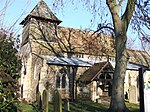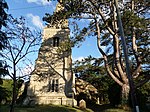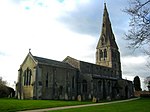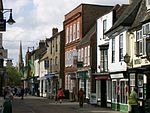Old Hurst

Old Hurst is a village and civil parish in Cambridgeshire, England, approximately 5 miles (8 km) north-east of Huntingdon. It is situated within Huntingdonshire which is a non-metropolitan district of Cambridgeshire as well as being a historic county of England.The small Parish Church of St Peter's dates from the 13th century and is a Grade II* listed building.At one time, at the most prominent point along the road between Old Hurst and St Ives, there could be found a low chair-shaped hunk of stone called the Hursting Stone, or the Abbot's Chair. This glacial relic served many functions throughout the centuries, having been sculpted into a curious chair-shaped mass: folklore has it that it in the Middle Ages it formed the base of a plinth that held an almighty stone cross upright. Here, sentences were passed in open-air trials. Later it earned the name 'Abbot's Chair' from the belief that monks would sit in it and rest while travelling. This antiquity now rests against a wall just outside the Norris Museum in St Ives and, according to the writer Daniel Codd, there is a belief that it is haunted. There is also a belief that if the stone should ever sink beneath the earth then the streets of Bluntisham would run red with blood.
Excerpt from the Wikipedia article Old Hurst (License: CC BY-SA 3.0, Authors, Images).Old Hurst
Old Hurst Road, Huntingdonshire Old Hurst
Geographical coordinates (GPS) Address Nearby Places Show on map
Geographical coordinates (GPS)
| Latitude | Longitude |
|---|---|
| N 52.37 ° | E -0.09 ° |
Address
Old Hurst Road
Old Hurst Road
PE28 3BQ Huntingdonshire, Old Hurst
England, United Kingdom
Open on Google Maps








